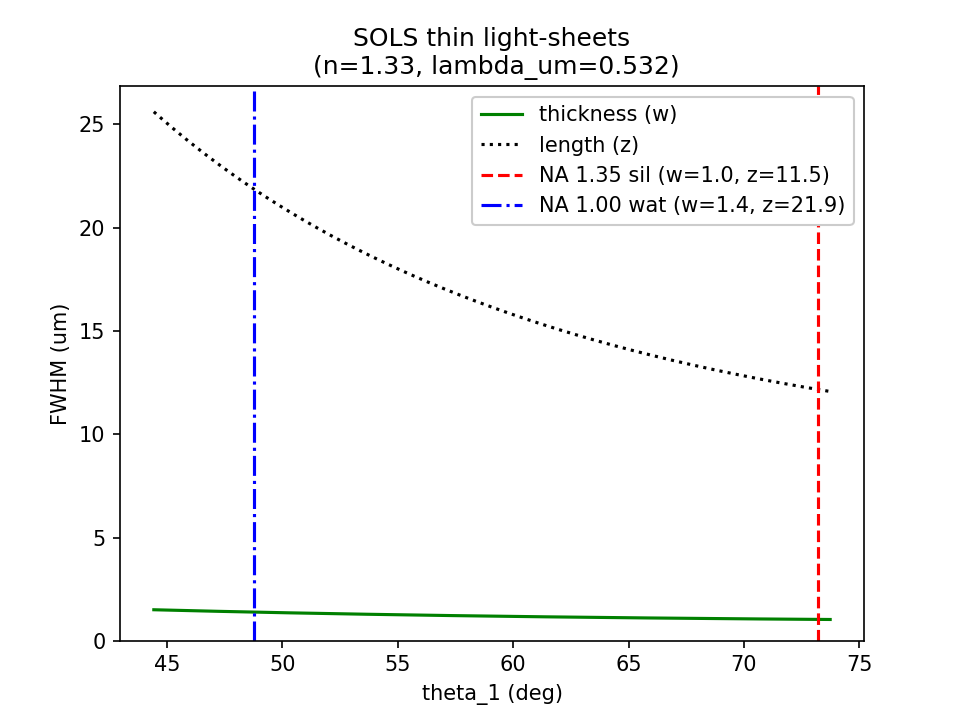SOLS excitation
In a single-objective light-sheet (SOLS) microscope, how should we configure the excitation?
ContentsThin light-sheets
One way to choose a 'thin' light-sheet is to match the light-sheet waist to the axial point spread function of the emission (i.e. \(w_0 = z_0 \sin\theta_e\) in SOLS_optimum_tilt):

In this regime we can then use: \[ \theta_x = \theta_1 - \theta_e \tag{1}\] and, from SOLS_optimum_tilt, \[\tan\theta_e = \frac{\sin\theta_1}{\frac{1}{2\pi} + \cos\theta_1} \tag{2}\] which gives an expression that depends only on the choice of objective: \[ \theta_x = \theta_1 - \arctan \left( \frac{\sin\theta_1}{\frac{1}{2\pi} + \cos\theta_1} \right) \tag{3}\] The transverse full width half max of a Gaussian beam light-sheet is then: \[ w_{FWHM} = \sqrt{2\ln2}\frac{\lambda_0}{\pi \theta_x n} \tag{4}\] and the longitudinal full width half max is twice the Rayleigh range: \[ z_{FWHM} = 2 \frac{\lambda_0}{\pi \theta_x^2 n} \tag{5}\] Since (4) and (5) depend only on \(\theta_1\), we can readily plot the results over the angular ranges typically available for objective 1:

Note: In this configuration the light-sheets are relatively thin (1.0 - 1.4um), which offers good sectioning. However, they are also quite short, with an intensity drop of 50% over 11.5 - 21.9um, which may not be good for many samples!